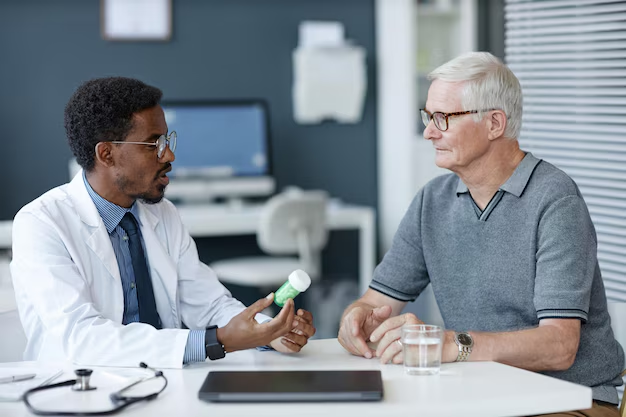Understanding Tuberculosis: Is a Cure Possible?
Tuberculosis (TB) is often misunderstood, shrouded in history, and forgotten amidst modern medical advancements. However, understanding its treatment and whether it can be "cured" is vital, especially since TB continues to affect millions of people worldwide. Let's dive deep into this infectious disease, exploring its complexities and what modern medicine offers for managing it.
What is Tuberculosis?
Tuberculosis is a potentially serious infectious disease that primarily affects the lungs. It is caused by the bacterium Mycobacterium tuberculosis. This bacterium spreads from person to person through tiny droplets released into the air via coughs and sneezes.
Symptoms of Tuberculosis
Recognizing the symptoms of TB is crucial for timely treatment. Common symptoms include:
- Persistent cough lasting more than three weeks
- Coughing up blood
- Chest pain during breathing or coughing
- Unexplained weight loss
- Night sweats
- Fever
- Fatigue
These symptoms can vary depending on whether the TB is latent or active, and prompt attention to these signs can make a significant difference in treatment outcomes.
Treatment Options: Can TB Be Cured?
The question, "Can you cure tuberculosis?" might sound straightforward, but the answer requires nuance. Yes, TB can be "cured," but it involves rigorous and lengthy treatment.
Standard Treatment Regimen for TB
The treatment of TB involves a combination of antibiotics taken over a minimum of six months. This long duration is necessary because TB bacteria die slowly, and treatment needs to reach bacteria that can be dormant.
Initial Intensive Phase (2 months):
- Drugs: Rifampicin, Isoniazid, Pyrazinamide, Ethambutol
- This phase aims to kill most bacteria and prevent them from multiplying.
Continuation Phase (4 months):
- Drugs: Rifampicin, Isoniazid
- The focus here is to eliminate any remaining bacteria.
Challenges in TB Treatment
Despite the structured treatment, TB presents several challenges:
- Drug resistance: Some forms of TB, known as multi-drug resistant TB (MDR-TB) and extensively drug-resistant TB (XDR-TB), do not respond to standard drugs, needing alternative treatments.
- Patient adherence: TB treatment is prolonged and requires strict adherence, which can be challenging for many, leading to incomplete treatment and the development of resistant strains.
Latent vs. Active TB: Different Scenarios, Different Approaches
Understanding the difference between latent and active TB is critical to realizing who needs treatment and what kind.
Latent TB
In latent TB, the bacteria remain in the body in an inactive state and cause no symptoms. It isn't contagious but can become active, hence requiring treatment.
- Treatment usually includes: Isoniazid or Rifampicin for a certain period, typically ensuring the bacteria remain inactive.
Active TB
Active TB is where the disease manifests symptoms and can spread to others. Immediate and complete treatment is crucial for both recovering and preventing spreading.
Addressing Drug-Resistant TB
Multi-drug resistant TB (MDR-TB) and extensively drug-resistant TB (XDR-TB) are severe forms of TB resistant to first-line treatment drugs. Their management requires specialized, often longer treatment regimens with second-line drugs, which can be more toxic and less effective.
Advancements in Drug Development
Recent advancements have seen the introduction of new drugs, such as Bedaquiline and Delamanid, for resistant forms of TB, offering new hope. However, these treatments still necessitate rigorous administration and adherence.
Is Vaccination an Effective Preventive Tool?
The Bacille Calmette-Guérin (BCG) vaccine is the only available vaccine for TB and is part of the routine neonatal vaccination in many countries. However, its effectiveness varies, and it's primarily used to protect infants against severe forms of TB.
Ongoing Research in Vaccines
Research is ongoing to develop more effective vaccines for TB, aiming at broader and longer-lasting protection.
Global Efforts in Combating Tuberculosis
TB is often connected with poverty, poor living conditions, and inadequate healthcare systems. Global health organizations, along with government bodies and NGOs, are working tirelessly to eradicate TB as a public health problem.
WHO's End TB Strategy
The World Health Organization's End TB Strategy aims to reduce TB deaths by 95% and cut new cases by 90% by 2035. This strategy focuses on:
- Improved detection and treatment
- Addressing drug-resistant TB comprehensively
- Enhancing preventive therapy
Community and Education
Educating communities about TB, its spread, and the importance of treatment adherence plays a significant role. Empowering patients and their communities is crucial to prevent both transmission and the development of resistance.
Empowering the Individual
For individuals and families affected by TB, understanding the condition and available treatments is empowering. Knowledge helps in overcoming the stigma often associated with the disease and encourages adherence to treatment plans crucial for recovery.
Practical Steps for Patients
- Regular Checkups: Ensure regular visits to healthcare providers to monitor progress.
- Adherence to Treatment: Complete the full course of medication even if symptoms improve to prevent relapse and resistance.
- Balanced Diet and Rest: Maintain a healthy diet and rest adequately to support the body during recovery.
- Community Support: Engage with support groups for mental and emotional encouragement.
Understanding TB and the paths to cure it involves comprehending its complexity and the diligent application of science and medicine. While TB presents numerous challenges, victory over it is possible with education, commitment, and continued innovation in treatment strategies.
Summary:
- Tuberculosis (TB) is a curable infectious disease when treated properly.
- Treatment involves a combination of antibiotics over at least six months.
- Adhering to treatment is crucial to prevent relapse and drug resistance.
- Latent and active TB differ; latent TB is non-symptomatic and non-contagious.
- Drug-resistant TB requires specialized treatments; newer drugs like Bedaquiline offer hope.
- BCG vaccine provides limited immunity, particularly effective in infants.
- Global strategies, like WHO's End TB Strategy, aim to significantly reduce TB's impact.
- Community education and support empower patients, reduce stigma, and enhance recovery.
🌟 Key Takeaways: TB can be cured through comprehensive treatment, early detection, community support, and understanding its complexities. 🏆
